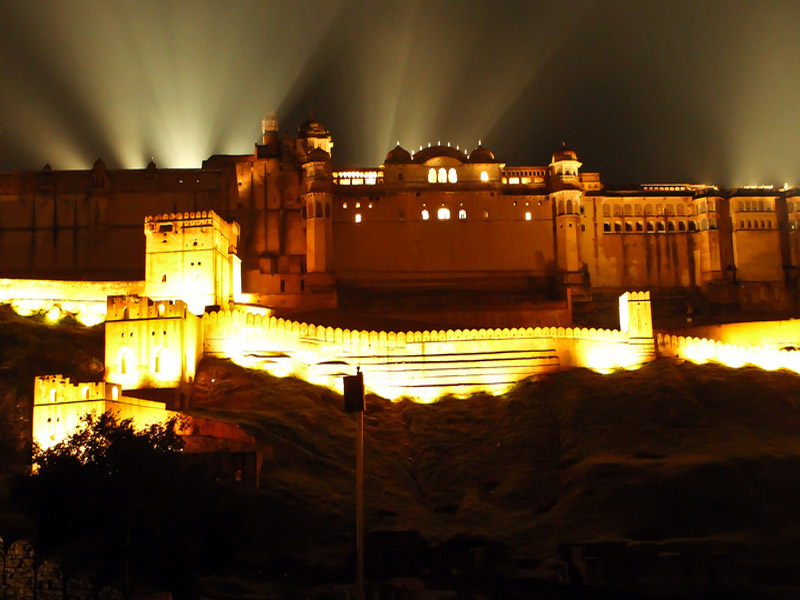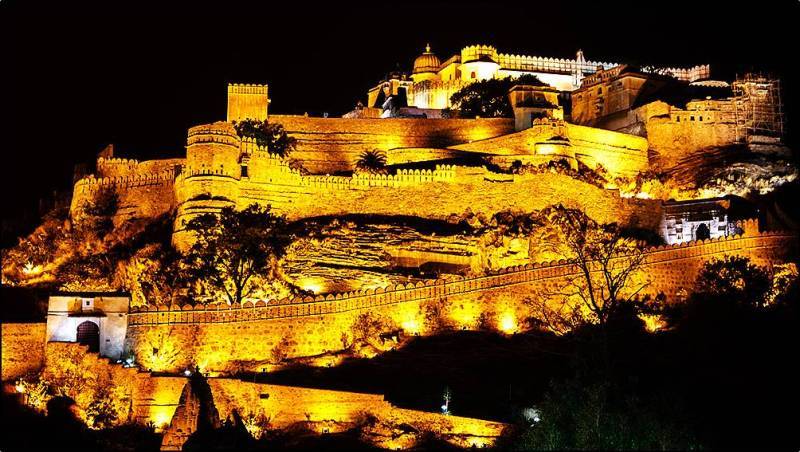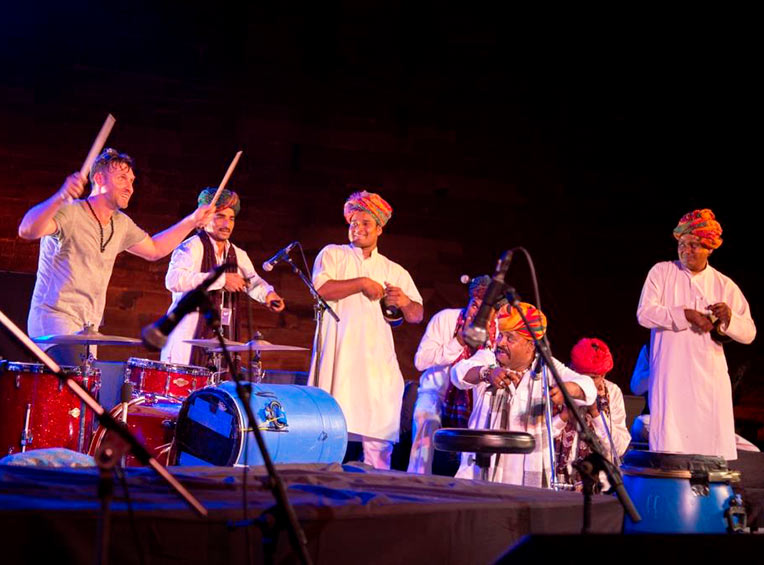DANZA, SONIDO Y LUZ MUESTRA EN RAJASTHAN
Un espectáculo de gran deleite visual, el Amber Fort & Palace Complex en Jaipur, alberga un impresionante son-et-lumière.
El fuerte de Amber ha sido el hogar de 28 reyes de la dinastía Kachwaha hasta que su capital fue trasladada a Jaipur.
SONIDO Y LUZ MUESTRAN (SON ET LUMIÈRE) EN AMBER FORT : –
El espectáculo de luz y sonido en Amber Fort es un glorioso intento de revivir el orgullo, la historia y las tradiciones de Amber. El espectáculo destaca las leyendas locales, el folclore y celebra a los maestros de la música popular, quienes, hasta el día de hoy, siguen otorgando a Rajasthan su identidad única. El espectáculo se ha ambientado en un lugar espectacular, con una vista brillante del complejo Amber Fort & Palace en el frente, el Jaigarh que se eleva a la izquierda y magníficas colinas detrás de él.

Tiempos
Octubre a febrero -6: 30 pm (inglés) / 7:30 pm (hindi)
De marzo a abril – 7:00 p.m. (inglés) / 8:00 p.m. (hindi)
Mayo a septiembre – 7:30 p.m. (inglés) / 8:30 p.m. (hindi)
SONIDO Y LUZ MUESTRAN (SON ET LUMIÈRE) EN KUMBHALGARH FORT :-
Elegantemente ubicado en lo alto de las escarpadas colinas de Aravalli, el hermoso fuerte de Kumbhalgarh acoge uno de los espectáculos de luz y sonido más brillantes de Rajasthan. Las noches aquí cobran vida con este espectáculo de luces y sonidos que narran la historia secreta escondida detrás de la fachada de piedra de este majestuoso fuerte.

Los lugareños afirman que su muro es el segundo más grande del mundo, después de la Gran Muralla de China. Sin embargo, la única manera de validar esta afirmación es abrirse camino aquí, idealmente alrededor de las 6:45 PM, y ver por ti mismo, mientras disfrutas del hermoso espectáculo.
FESTIVAL INTERNACIONAL DEL FOLK RAJASTHAN (A.K.A JODHPUR RIFF) :-
Una verdadera delicia para aquellos que tienen un buen oído para la música folclórica, el Festival Internacional de Folk de Rajastán (RIFF) que se celebra en Jodhpur y cuenta con más de 250 músicos y artistas que asisten al evento. Estos artistas hacen su camino desde toda la India y el mundo para celebrar el rico patrimonio musical de Rajasthan. Disfrute de un festival de música folclórica único en su tipo que es una amalgama de música folclórica local e internacional para producir un conjunto de producción estelar en el contexto del majestuoso Fuerte Mehrangarh.
Este festival anual se inició en 2007 por el Mehrangarh Museum Trust y la Jaipur Virasat Foundation, dos de los principales fideicomisos de patrimonio de la India, denominados colectivamente TRIFF Society. La sociedad ha tomado esta iniciativa en un intento de promover la tradición de la música folclórica y el arte y logran esta tarea con gran aplomo organizando una variedad de eventos como una noche de jazz, una noche de Rajasthani, espectáculos de danza gitana, formas de danza tradicional y incluso temprano en la mañana ragas. Además, se planea que este evento coincida con Sharad Purnima, un festival de cosecha celebrado el día de la luna llena en el calendario lunar.
COKE STUDIO :-
Coke Studio de MTV es conocido por sus brillantes actuaciones grabadas en vivo por leyendas de la música. El 17 de octubre de 2015, Coke Studio, celebrado en Jaipur en el marco de un Albert Hall magníficamente iluminado, cautivó a la gente con una espectacular formación de talentos musicales como Amit Trivedi, Ram Sampath y Sona Mohapatra. Asistieron más de 10,000 personas.
Estos son algunos de los que reflejan la belleza de Rajasthan de otra manera
Turismo en Rajasthan
Paquetes de viaje de Rajasthan
Paquetes de alquiler de coches en Rajasthan
